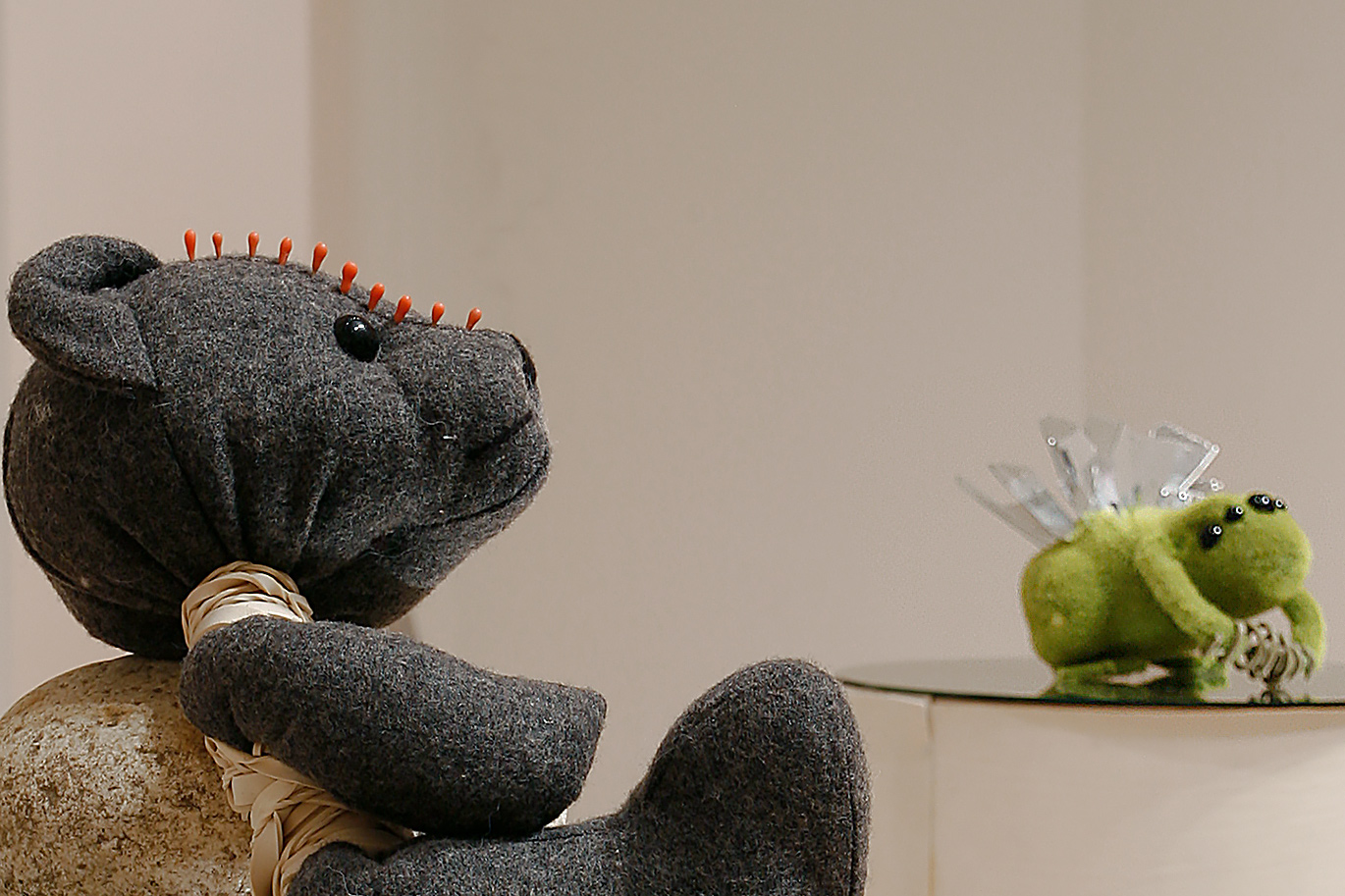- Winter 2021
Syllabus Description:
PLEASE NOTE: Regardless of what you see on the Time Schedule or MyPlan, there will be NO SET MEETINGS for this course (and it does not matter at all what "section" you sign up for). The course will be entirely ONLINE and ASYNCHRONOUS. See below for more....
AH 203 Syllabus Winter 2021.docx
Intro Email AH 203 Winter 21.docx
Art History 203 (Writing Credit)
Survey of Western Art--Modern
Winter 2021
Instructor: Kolya Rice krice@uw.edu
Office hours by Zoom appointment
Teaching Assistants:
Laura Stowell lstowell@uw.edu
Tori Champion techamp@uw.edu
Office hours by Zoom appointment
Course Description:
This course introduces the major figures, styles and movements in Western art from the High Renaissance to the present. It also presents the principle issues, techniques, and interpretive methods of the discipline of art history. As well as learning to recognize the key “monuments” of European and American art from around 1500 to 1900, students will consider how a study of visual products adds to our understanding of past cultures and societies.
This class will be entirely online. The modality will be "asynchronous," meaning that participants will work through sequences of materials and assignments organized in weekly “modules” on Canvas according to their own individual schedules with a great degree of flexibility. (You will not need to be online at the same time as your peers, ever.) Please note: weekly “modules” will open on the Monday morning for that week. Before this you will not be able to access the module. Once a module has been opened, it will remain open and be available for you until the end of the quarter.
Course content will be delivered through a series of Panopto video lectures and coordinated readings where participants will explore the history of visual arts. Online discussion forums, various essays on readings and lectures, and online quizzes have been designed to engage students with course topics, foster creative and critical thinking, allow dialogue concerning the visual representations of past cultures, and allow instructor assessment and evaluation of participants’ progress.
The Content, Topics and Themes of this course will include the following:
• Canonical artists, paintings and sculptures from around 1500 to 1900
• Social, political, economic, and historical contexts of art
• World artistic traditions
• Visual representation of dominant ideological assumptions of cultures
• Dominant themes and issues in the arts
• Analytic methodologies employed in the discipline of Art History
Required Readings:
1. Textbook: Marilyn Stokstad, Art History, 6th Edition, vol. 2 (2018) Purchase E-text Version
2. Special topics reading posted as PDF files on Canvas in the weekly modules
Student Responsibilities:
2 quizzes: 10% each (20% of overall grade)
Each quiz will require students to define terms, to write short answers and longer essays on topics covered in the Panopto lectures and readings. These are open notes quizzes—you may return to the lectures and readings when composing your answers. Each quiz will only cover the topics for that 5-week section of the course. In other words, they are not comprehensive. You will have a full week to complete each quiz. These quizzes will be graded on a 10-point scale.
3-Page Compare/Contrast essay (10%) See prompt on Canvas
In this writing assignment students will employ a fundamental art historical method of “formal analysis” to see the visual differences between two works of art with similar subjects and to build a compelling written argument that clearly communicates how these visual differences “add up” to different messages.This assignment is graded on a 10-point scale.
3-Page Summary Essay and revision (10%) See prompt on Canvas
In this writing assignment students will be required to clearly summarize important information related to canonical works of art and their cultural contexts that you have encountered in lectures, discussions and special topic readings over the course of the quarter. One revision in response to assessment feedback will be required. This assignment is graded on a 10-point scale.
5-Page Directed Research paper steps and revision (25%) See prompts on Canvas
In this this research-based writing assignment students will critically assess scholarly arguments in the discipline of Art History, which will provide the basis of a clearly organized and argued interpretation of a work of art. This assignment will have several steps. One revision in response to assessment feedback will be required. This assignment is graded on a 100-point scale.
Participation in weekly discussion forums (30%) See prompts on Canvas
The topics of this course can lend themselves to rich discussion. Candidly, this is often difficult to achieve in an online course. My hope is that you will engage with each other, respectfully and thoughtfully in the weekly online discussion forums. Each week I will provide you with specific topics, ideas and issues raised in the lectures and readings. Each student will be required to make one post in the discussion forum before the end of the day on Wednesdays. Once you have posted, you will be able to see other students’ posts. You are required to respond to at least one of these posts from another student by the end of the day on Fridays. You are welcome and encouraged to post/respond as many times as you desire. Your posts/responses will be graded on a 10-point scale.
Key due dates to remember:
1/17: Compare/Contrast Formal Analysis essay due on Canvas
1/31: Initial draft Summary Essay due on Canvas
2/5: Annotated bibliography due on Canvas
2/12: Final draft Summary Essay due on Canvas
2/14: Quiz 1 due on Canvas
2/19: Directed Research Paper thesis statement & outline due on Canvas
2/28: 1st draft of Directed Research Paper due on Canvas
3/7: Quiz 2 due on Canvas
3/14: Final draft of Directed Research Paper due on Canvas
Late papers and discussion post policy:
Papers will be marked down 1 point for each day they are late and will not be accepted more than five calendar days following the due date. Discussion posts will be marked down 2 points for each day they are late and will not be accepted if more than 3 days late. If you have a serious conflict or emergency, please talk to me about it in advance of the due date and I will work with you.
The 10-point scale corresponds to the following grades:
10 4.0 A
9 3.4 B
8 2.7 B-
7 1.7 C/C-
6 1.0 D
5 and below 0.0 F
The 100-point scale corresponds to the following decimal/letter grades:
95-100 4.0-3.9 A
90-94.99 3.8 - 3.5 A-
87-89.99 3.4 - 3.2 B+
83-86.99 3.1 – 2.9 B
80.00-82.99 2.8 - 2.5 B-
77-79.99 2.4 - 2.2 C+
74-76.99 2.1 - 1.9 C
70.00-73.99 1.8 - 1.5 C-
67-69.99 1.4 - 1.2 D+
64-66.99 1.1 – 0.9 D
60-63.99 0.8-0.7 D-
Below 60 0.0 F
Course Outcomes:
Learn Actively - Learning is a personal, interactive process that results in greater expertise and a more comprehensive understanding of the world.
- Distinguish formal qualities that separate different stylistic periods
- Employ interdisciplinary methods of visual analysis
- Explore the relationships between art and its social, cultural, political, historical and/or religious contexts
- Develop interdisciplinary knowledge to examine how power and privilege manifest in culture and investigate how systems of power are related to class, race, gender, religion, national origin, sexual orientation and other identities
- Identify strategies in visual representation for challenging systems of power and privilege
Think Critically, Creatively and Reflectively - Reason and imagination are fundamental to problem solving and critical examination of ideas.
- Use a variety of approaches to think critically about and reflect on personal and cultural assumptions and biases, and to consider alternative views regarding issues of power and inequality as they relate to issues of the visual representation of sexuality, ethnicity, gender and religion
- Identify key art historical issues, determine the assumptions underlying arguments, and recognize the way that historical and cultural context affect meaning
- Explore and articulate various ways that art represents cultural identity which is shaped by varying degrees of power and privilege, in relation to both a local context and interconnected world
Communicate with Clarity and Originality - The ability to exchange ideas and information is essential to personal growth, productive work, and societal vitality.
- Discuss multiple interpretations of course content as it relates to structures of power, privilege and inequality using discipline-appropriate concepts and theories, and articulate how and why these structures inform personal, professional and social identities
- Articulate points of view while using details of a work of art or its context as evidence
- Demonstrate proficiency to conduct guided research using a wide variety of materials from multiple points of view
- Use appropriate sources and technologies to gather and present information
- Question and reflect on assumptions, statements and information made throughout the course by the text, instructors and students
- Demonstrate effective use of interdisciplinary methodologies employed in the course to visually analyze works of art and architecture
- Contribute ideas and information individually and in a group dynamic
VeriCite anti-plagiarism software:
Notice: The University has a license agreement with VeriCite, an educational tool that helps prevent or identify plagiarism from Internet resources and work submitted by previous students of this course. I will use the service in this class; all assignments and quizzes you submit will be checked by VeriCite. The VeriCite Report will indicate the amount of original text in your work and whether all material that you quoted, paraphrased, summarized, or used from another source is appropriately referenced. All instances of intentional plagiarism will result in zero credit on the assignment, and a report of indicating academic dishonesty to the School of Art and the University of Washington. For further information, visit: https://itconnect.uw.edu/learn/tools/canvas/canvas-help-for-instructors/assignments-grading/vericite/plagiarism-faqs/



